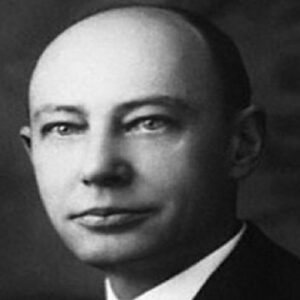George Richards Minot was a well-known medical researcher in the United States. Minot was a zealous student of medicine who developed an interest in the study of human blood. It was his dedication and passion for this profession that resulted in the phenomenal discovery — the treatment for pernicious anemia — for which he shared the 1934 Nobel Prize in medicine with Boston physician William P. Murphy and George Hoyt Whipple. Minot led an active life, being affiliated with a number of medical organizations and institutions while also studying, researching, and contributing to the field of physiology. In 1915, he was appointed to the position of ‘Assistant in Medicine’ at Harvard Medical School and Massachusetts General Hospital. He eventually rose to positions of prominence, both at Harvard and at other renowned hospitals, such as Harvard University’s Collis P. Huntington Memorial Hospital. Minot lived an honorable life, dedicating his efforts to the cure of anemia and several other blood-related diseases.
Childhood of George
George Richards Minot was born in Boston, Massachusetts, on December 2, 1885. He was the eldest of Dr. James Jackson and Elizabeth Whitney Minot’s three sons.
His family was prosperous, as his forefathers and mothers had prosperous businesses and professional careers. The founder of Massachusetts General Hospital was one of his great-grandfathers. Minot’s father was a physician who spent many years as a medical instructor at the
Massachusetts Hospital. Minot was a delicate child who required a great deal of care and nutritious food due to her frequent fevers.
He spent the majority of his winters in Southern California with his parents, which allowed him to get closer to nature.
In 1902, he published two articles on butterflies as scientific papers. This demonstrated his enthusiasm for natural history.
The Nobel Prize Journey
On October 1, 1908, Minot enrolled at Harvard Medical School. Even as a student, Minot worked at a Harvard-run outpatient clinic. He demonstrated an interest in blood disorders and authored numerous scientific articles on the subject.
He began his internship at the Massachusetts General Hospital in Boston in 1912, after receiving his M.D. He then worked as a research assistant at Baltimore’s Johns Hopkins University School of Medicine. He conducted numerous studies on blood clotting, blood transfusion, and a variety of blood disorders.
His research also included the state of blood in cases of industrial poisoning, leukemia (blood cancer), disorders of the lymphatic system, and polycythemia. However, the most significant of all his studies was the one on anemia, to which he devoted his entire life.
He became acquainted with William P. Murphy and George Hoyt Whipple during his research. He was taken aback by Whipple’s work on experimental methods of treating canine anemia. Minot and Murphy developed a treatment for pernicious anemia in 1926.
Pernicious anemia was a fatal disease with no cure at the time. IMinot, in collaboration with Murphy and Whipple, devised a method of treating anemia via the liver. Each of them received the 1934 Nobel Prize in medicine.
Minot’s discovery of reticulocytes, or immature red blood cells, was truly remarkable. He discovered that anemia is related to a person’s bone marrow malfunction (which produces red blood cells), which is connected to his dietary habits.
Minot spent the majority of his time at Boston’s Collis P. Huntington Memorial Hospital conducting research on various types of leukemia. In 1918, he was appointed assistant professor at Harvard Medical School.
Minot was inspired by George Hoyt Whipple’s experiments on pernicious anemia, which demonstrated that anemia can be cured in dogs by feeding red meat, particularly liver. Minot conducted a similar experiment on anemia patients.
He and Dr. William P. Murphy began administering a half-pound of liver to as many anemic patients as possible. The experiment was a success. All patients who were convinced to consume liver demonstrated dramatic improvement.
Their condition was observed to improve rapidly and without deterioration. Fraction G’s Development
Minot and Murphy went on to present reports on the successful treatment of at least 45 patients with pernicious anemia at the American Medical Association’s annual meeting in Atlantic City, New Jersey.
The following year, they presented reports on the successful treatment of 105 patients at a meeting in Washington, D.C. Their investigation did not stop here. They went on to discover that pure liver extracts can benefit patients due to their ability to be taken in significantly smaller doses.
As a result, they approached Dr. Edward J. Cohn, a physical chemistry professor at Harvard Medical School, and convinced him to work on developing pure liver extracts. Dr. Cohn could accomplish this task by fractionating pure liver into “Fraction G.” Fraction G was first manufactured by the Eli Lilly Company.
Minot and his associates later discovered in 1929 that small doses of the substance had the same effect as large amounts of liver given to patients.
Death
Minot suffered a severe stroke on April 16, 1947, and died in Brookline, Massachusetts, on February 25, 1950. Minot is still remembered for his discovery of anemia therapy. Honors And Commendations
Minot’s work on blood disorders, particularly pernicious anemia, and the treatment of terminal disease earned him the 1934 Nobel Prize in Physiology or Medicine.
Estimated Net Worth
George is one of the wealthiest physicians and is ranked among the most popular physicians. According to our analysis, George Richards Minot’s net worth is approximately $1.5 million, as reported by Wikipedia, Forbes, and Business Insider.


